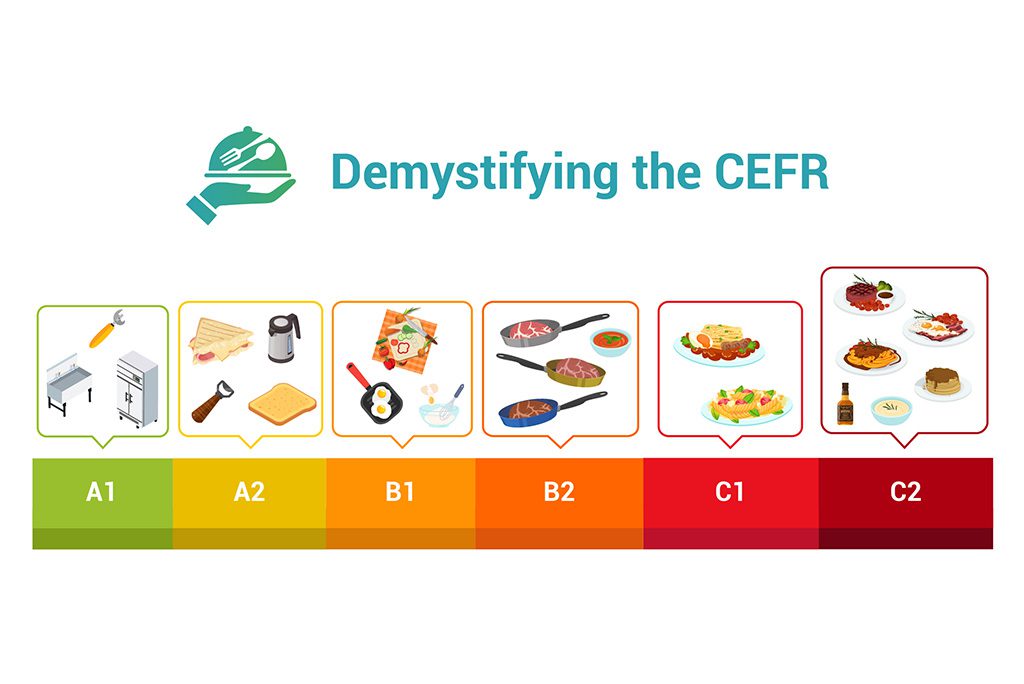The CEFR is a wonderfully elegant and simple concept burdened by a horribly opaque and complex name. The Common European Framework of Reference for Language. Ugh! Everything about it jars. And if it is inaccessible for us as language professionals, how much more off-putting must it be for the ‘lay’ community of learners, admissions staff and HR professionals who have an interest in using it.
That’s why I love Sean McDonald’s approach to demystifying the system. Sean is English Assessments Project Manager at telc Language Tests in Frankfurt and works with the CEFR every day. He has devised a way of making the scale instantly comprehensible by creating an ingenious parallel scale for cooking. It goes like this.
The CEFR for the kitchen
| C2 | Can prepare a four-course meal, including dessert. Can choose appropriate wine. Can make a Béarnaise sauce. |
| C1 | Can follow a recipe for complex dishes. Can combine several vegetables. Can count and divide portions. |
| B2 | Can prepare a steak according to order (well done, medium, rare). Can make a complex tomato sauce for pasta. |
| B1 | Can use a knife to cut vegetables. Can mix ingredients such as flour and eggs. Can fry an egg. |
| A2 | Can boil water, can make toast. Can make a sandwich with meat and cheese. Can use a peeler. |
| A1 | Can find kitchen, refrigerator, sink, tin opener. Can follow simple instructions. |
So next time you mention the CEFR to your learners (or other stakeholders) only to be met with blank looks, simply reach for your SMFRG (Sean McDonald Framework of Reference for Gastronomy) chart. They will probably wish to challenge the hierarchy of descriptors (Is a peeler really more difficult to use than a tin opener?) — and this will segue smoothly and intuitively into a discussion of ‘can do’ statements for English within the concept of the CEFR. Why not try it out? After all, the proof of the pudding…

